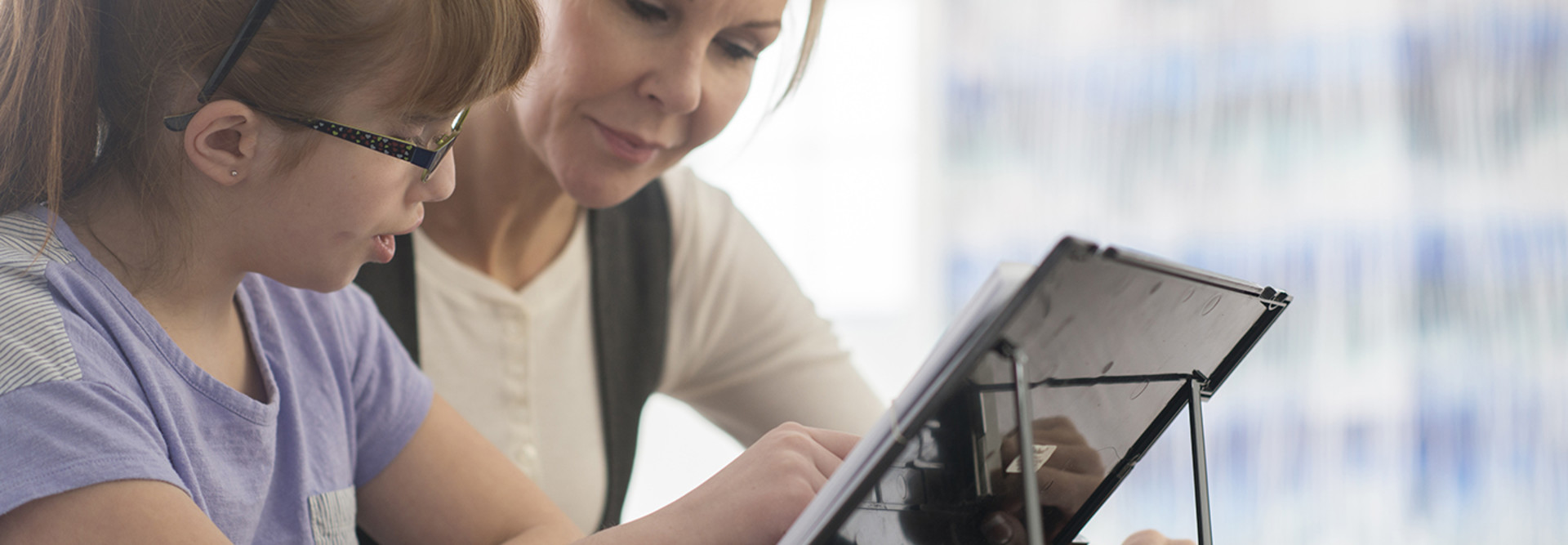3 Ways Assistive Technology in the Classroom Helps Students with Disabilities
For K–12 schools, the hallmark of success lies in their devotion to educating all students — no matter their background or ability. For students with a learning disability, even the simplest of classroom tasks can be a challenge without the proper scaffolding.
The latest data, from the 2014-15 school year, indicated that 6.6 million K-12 students received some kind of special education services. That was 13 percent of public school enrollment.
These students — and their peers — have benefited from the proliferation of technology into the classroom to make learning a personalized experience. From continually emerging assistive technology to updates to existing classroom technology, today’s classroom is now much more accessible.
SIGN UP: Get more news from the EdTech newsletter in your inbox every two weeks!
1. Assistive Technology in the Classroom Opens Up Student Achievement
In the 21st-century classroom, a more personalized approach to learning is key to student success. For students with disabilities, this is even more important. Under the tenets of Universal Design for Learning, educators create flexible lessons that let students of all abilities play to their own strengths when completing assignments.
Assistive technology is often a big part of making these flexible classrooms effective. Speech-to-text tools, such as Dragon NaturallySpeaking, can effectively help students who struggle to get their ideas out. Instead of focusing on how difficult writing is, these students can explore their creativity.
Text-to-speech lets students focus on their big picture idea, rather than the grammar and sentence structure, blogs consultant Susan Fitzell, who regularly writes using Dragon Naturally Speaking.
Thanks to technologies like this, students with disabilities are able to take initiative in their own learning.
Using assistive technology in the classroom, Cole Harvey, a dyslexic student, was able to learn how to read properly. Harvey tells CNN that once he was able to use technology for support, he could compensate for what he didn’t understand.
2. Microsoft’s OneNote Leads the Way in Adaptive Technology
While assistive technology software and apps are regularly being released, many tech companies have updated their tools to make them even more accessible.
Microsoft has made big strides in recent years with updates to its popular digital note-taking app, OneNote. Last year, the tech giant introduced Learning Tools in OneNote to help students with learning disabilities through features such as text to speech, speech to text and text spacing assistance.
With educators enjoying success from the tools, Microsoft has expanded them in Word on tablets and on its Edge browser.
“Part of Microsoft’s mission is to empower every person on the planet to achieve more,” says Mike Tholfsen, principal product manager of OneNote and Microsoft Education. “The entire world doesn’t know OneNote like they know Word or internet browsing. If we build these out into the Windows platform, we can allow as many people as possible to experience the benefits.”
Both Tholfsen and Microsoft VP of U.S. Education, Margo Day, say that Microsoft plans to continually update its tools to promote inclusivity in education.
“From Microsoft’s point of view, our mission statement of ‘empower every student’ is something we take as truth and is our own North Star,” says Day. “The operative word here is ‘every.’ Every student on the planet can help create the world of tomorrow.”
3. Assistive Tech Extends the Reach of STEM
Technology is also empowering students with disabilities to pursue science, technology, engineering and math (STEM) degrees just as often as other students.
At A. Harry Moore School in New Jersey, students with disabilities are exploring robotics and other aspects of computational thinking. Though many students have disabilities that limit their cognitive development, their teachers are finding ways to incorporate tools such as drones and 3-D printers.
“Anything can be adapted for students with disabilities,” says Stephanie Talalai, technology coordinator at A. Harry Moore School in an EdTech article. “It’s just a matter of what accommodation you are going to give them.”
Day believes that the combination of scaffolding and technology can help students pursue STEM in college and beyond.
“These technologies take down barriers so that the opportunities for a child in these future jobs can actually be realized by them,” she said.









